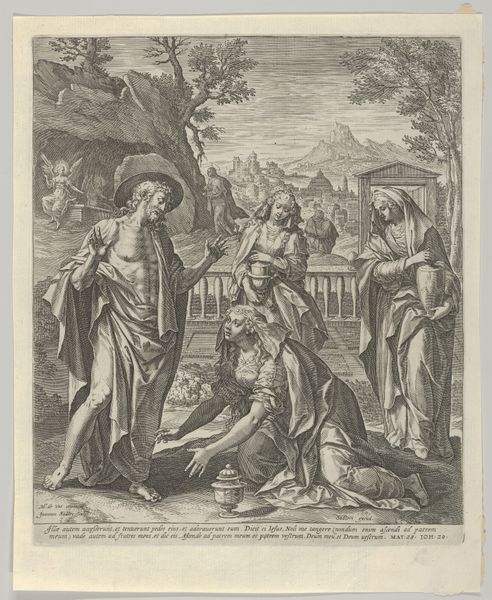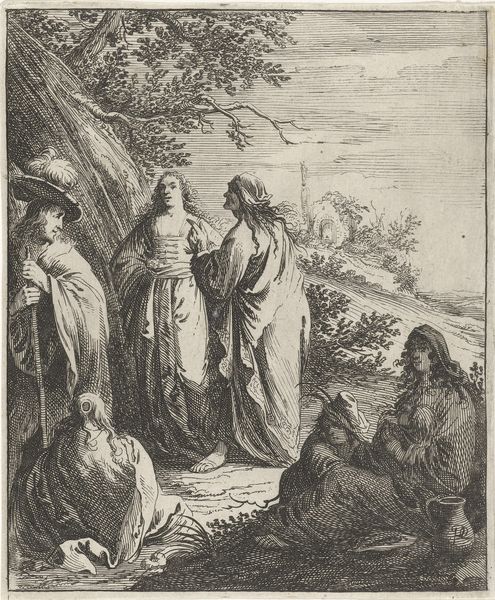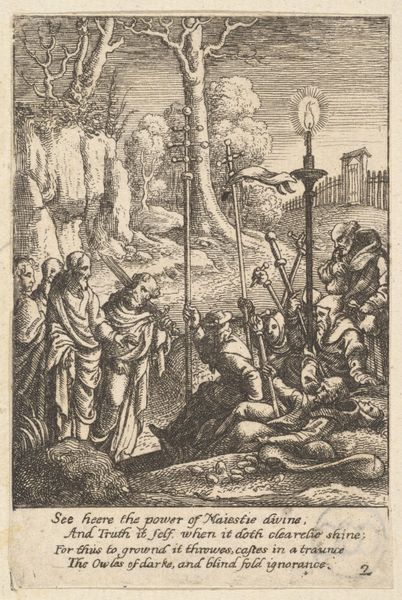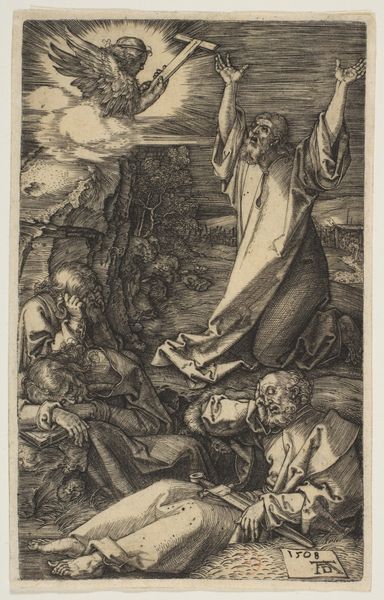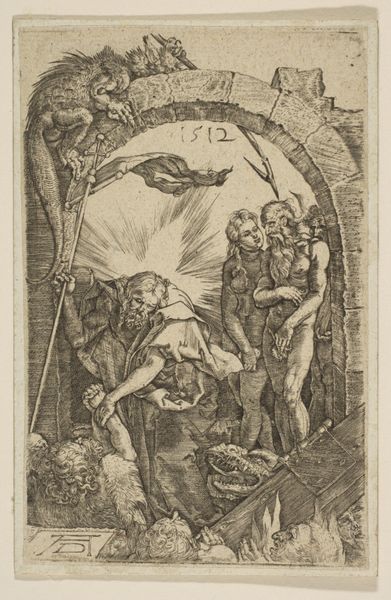
print, etching, engraving
#
allegory
#
baroque
# print
#
etching
#
landscape
#
classical-realism
#
figuration
#
line
#
history-painting
#
engraving
Dimensions: height 108 mm, width 123 mm
Copyright: Rijks Museum: Open Domain
Editor: Here we have Antonio Tempesta's etching and engraving, "Expulsion from Paradise," created sometime between 1565 and 1630. It feels like a theatrical tableau, but stark, etched in decisive lines. What draws your eye, and how do you interpret this iconic scene? Curator: My gaze is immediately caught by the radiant angel. Observe the figure's posture, the accusatory gesture, the weapon held not in aggression but as an emblem of divine authority. Consider the symbol of light surrounding the angel versus the shaded figures of Adam and Eve. How might this visual language speak to a deeper, cultural memory of guilt and loss? Editor: I notice Adam and Eve seem to be actively fleeing, not just being escorted. Curator: Indeed. That fleeing mirrors our own human condition, doesn't it? A continuous movement away from perceived perfection. Consider, too, the placement of the serpent. Its placement suggests not just temptation but a foundational disruption. Think about the way a culture interprets good and evil through recurring symbols; the snake being nearly as iconic as the apple. Do you see a potential tie in there? Editor: That's interesting! I had only considered the serpent in relation to the story itself, not as a broader symbol across cultures. Its position here, low, coiled, makes it almost seem like the bedrock of the new world they are entering. Curator: Precisely! And doesn't the sharp line work, typical of engraving, almost reinforce that feeling of a world now fractured? Editor: Absolutely. I’m now considering how much of the scene's meaning relies on established visual cues beyond just the narrative itself. It makes the scene more active and connected. Curator: And that connection is the true power of iconography. Symbols offer continuity, reflecting and shaping our understanding across time.
Comments
No comments
Be the first to comment and join the conversation on the ultimate creative platform.
